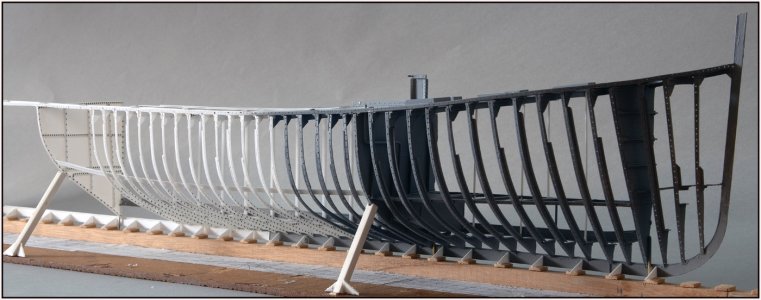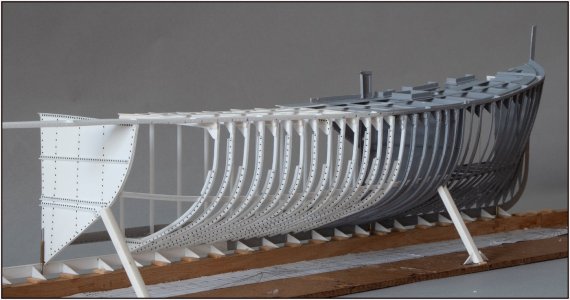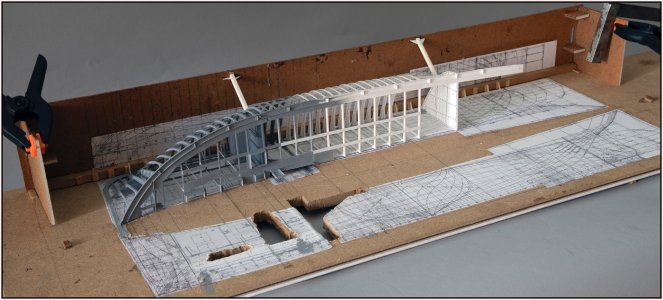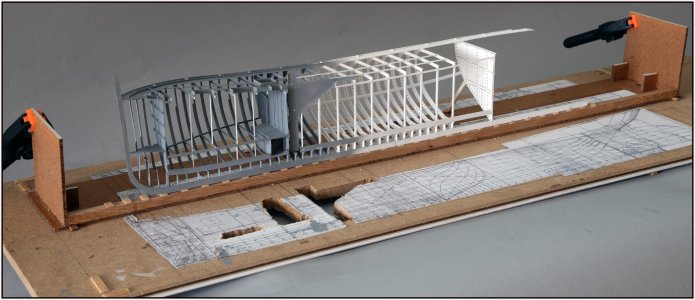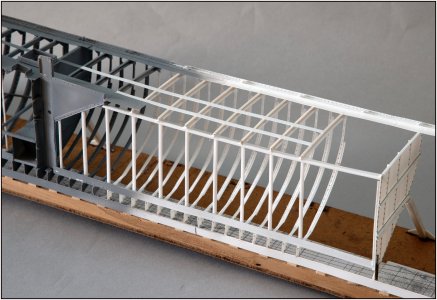The side of the hull between watertight bulkheads 14 and 39 will be a lot flatter at the height of the main frame 27. Small irregularities may be extra visible there. To prevent that, I started working with the bilge stringer. Once that is in place, I can align the frames that are still to be placed on it.
I had already shown these drawings:
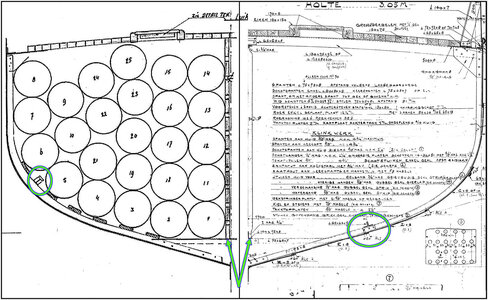
On the left, where the barrels will be placed with the bilge stringer between the 5th and 6th barrel. On the right, the old technical drawing where it is in a slightly different place.
In order to be able to determine the course properly, I also placed frame 21. I now have 5 points that I can align on:
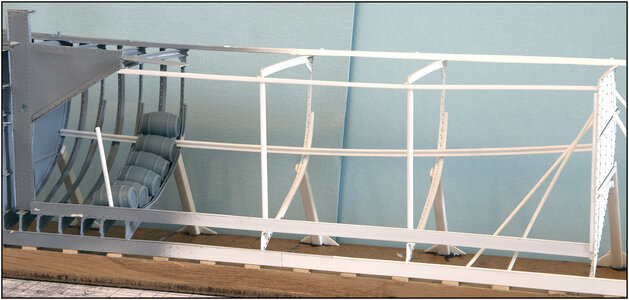
I placed a few barrels on frame 33 so that I can see that the calculated location of the bilge stringer runs between the 5th and 6th barrel.
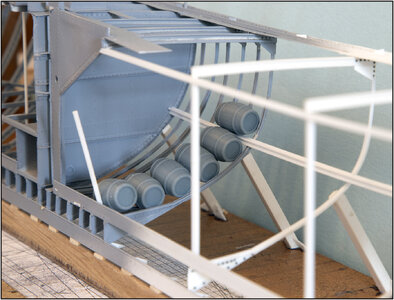
This is constructed from 2 L-profiles glued together.
The bilge stringer runs diagonally upwards towards the rear in an arc. This is because the frames become smaller again after main frame 27 and also flatten out:
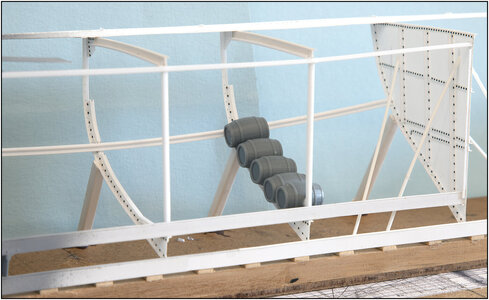
Here are the barrels on frame 21.
Seen from the side, it has a slightly strange course, but diagonally from above it runs almost parallel to the side of the deck:
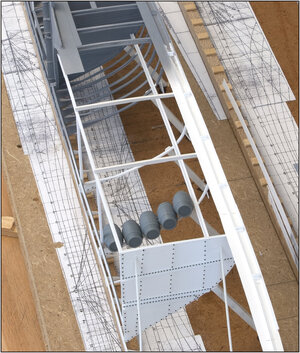
With all those curved lines, the play of lines is always different from every angle:
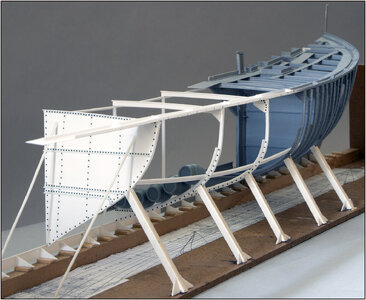
And the shape of the hull is increasingly expressed by every new step.
Regards, Peter




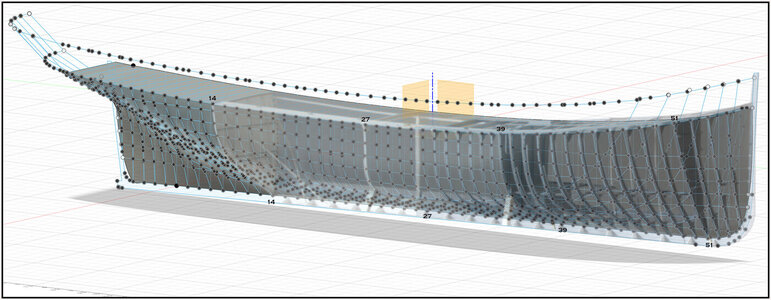






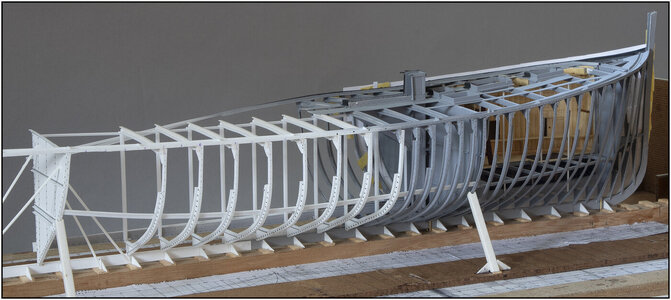
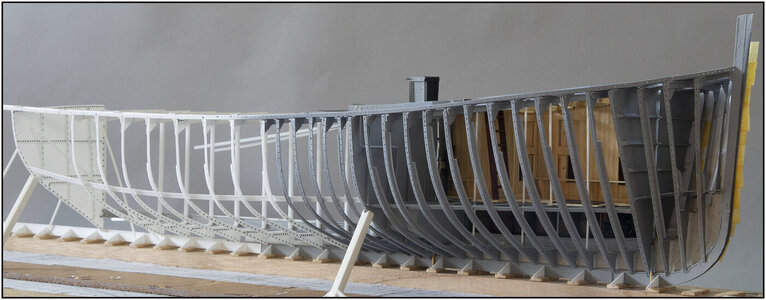
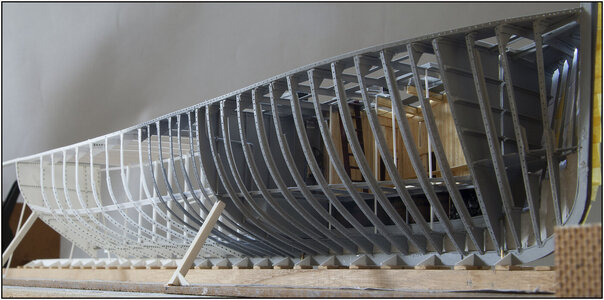
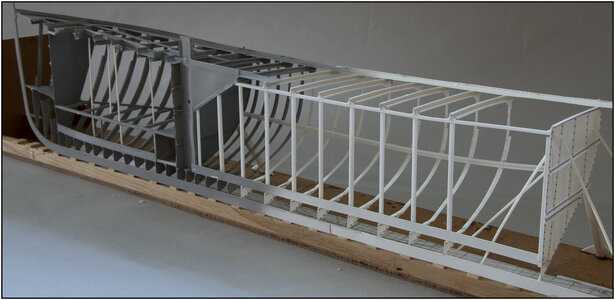

 . The search continues.
. The search continues.